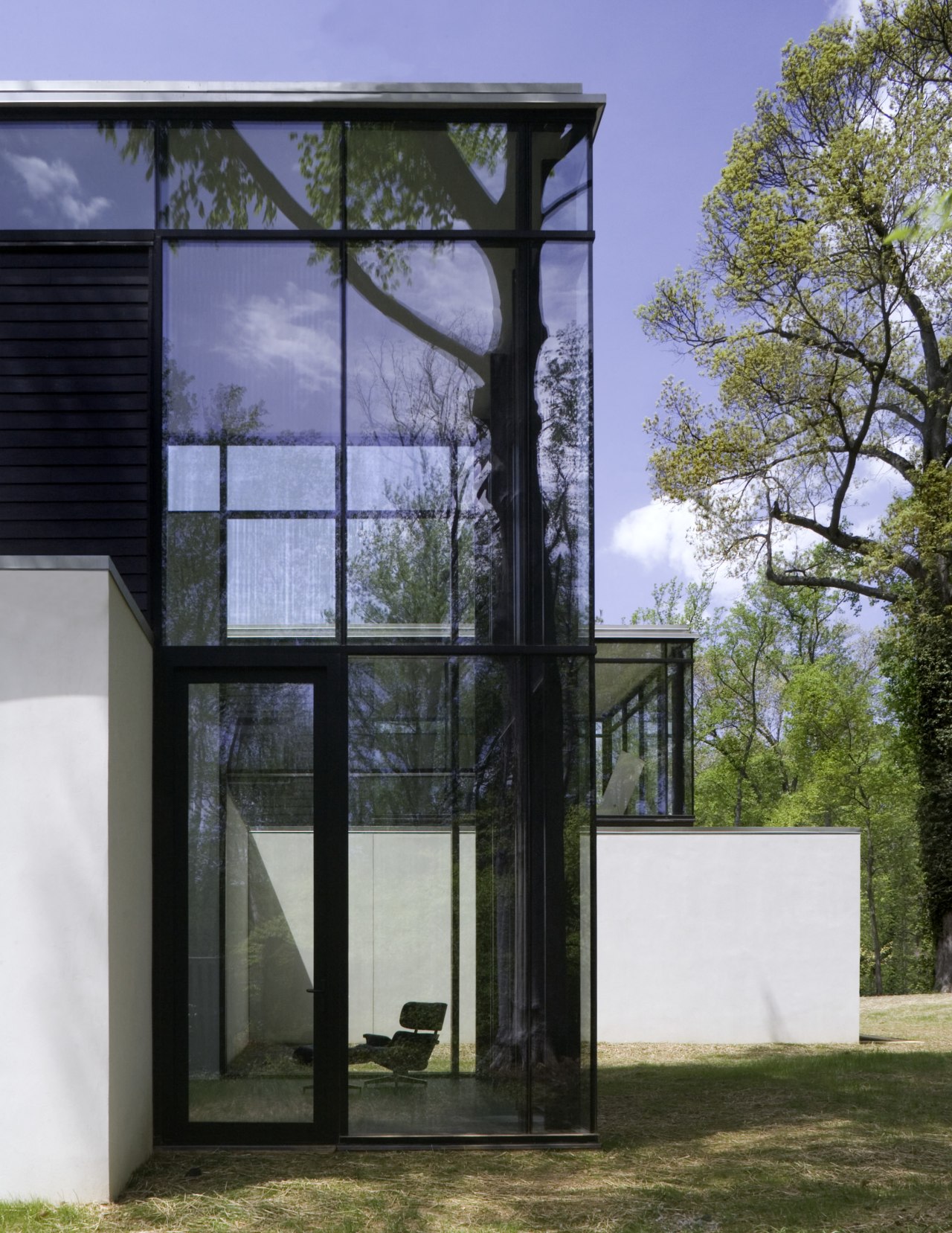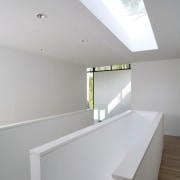Conversation piece new house by David Jameson
Light and shadow, black and white Jameson house

Every design has a beginning a point of reference that determines everything that follows. For this new house, there were two such points. One was the picturesque tree-studded setting and the other was the existing masonry walls of the former house that stood on site.
Architect David Jameson says the masonry shell of the original house had an undulating, rectilinear form created by numerous additions.
"Cladding the existing brick walls in white stucco renders the form as a solid plinth, from which emerges a series of tall glass pavilion-style volumes," he says. "These glass volumes are stitched together by black-clad circulation core, with the spaces between the towers helping to define the architecture. Because the second level has a significantly smaller footprint than the masonry base, the house is experienced as a conceptual Acropolis, with four modern glass temples rising from the ruins of the former building."
Sited on half an acre, the house was designed to maximize the soaring, leafy tree canopy windows were positioned to catch slices or wide expanses of the view.
"Creating varied window typologies lets the owners experience the views in different ways," says Jameson. "From some perspectives, the windows serve as a shroud for the road below, but other windows open up views of the tree canopy. I also wanted to explore the idea of apertures as a genesis for the architecture, much like camera F stops. Windows within the solid base are smaller, more confined and focused, like an F22 stop, while the canopy windows are like an F8 stop a wide-angle, blown-out view."
Capturing the natural light was also essential, the architect says.
"The glass towers are volumes of light emerging from the solid base. They gather natural light by day, and by night they glow like lanterns in the landscape."
Just as the house is a juxtaposition of heavy and light elements, so is the entry defined by contrasting materials. An awning comprised of a thin steel plate is cantilevered out from the building. There is also a heavy steel-sheathed door, contrasted by light panels of etched glass.
The interior of the house continues the ideology of the exterior. White-painted walls contrast with dark gray resin floors, giving the interior a monolithic quality.
"One glass volume slices through the plinth in the family room to provide unencumbered views of the site," says Jameson. "The sunlight that pours into the house is almost like a material in itself. It pulses throughout the interior, creating an interplay of light and shadow that changes throughout the day."
In addition to light coming in through windows in the double-height family room and living room, light from a long, narrow skylight floods the stairwell. This illuminates both sides of a spine wall, and a mezzanine walkway.
"The light streaming down from the skylight draws the eye upwards," says Jameson. "It creates a sense of mystery the house doesn't completely reveal itself at first glance."

On the main level, however, wide openings between the living spaces and circulation areas create a sense of connection. Visual continuity is also provided by the furniture. Built-in cabinets are in ebony wood veneer. Other furniture is also mainly wood, or black or white leather.
"The owners deisred a very distilled environment," Jameson says. "We added generous storage space to ensure this would be possible. There are pockets of storage throughout the house, in large, walk-in closets, the mud room and laundry room, for example."
With two parallel islands, a bank of wall cabinets and desk area, the kitchen-dining area also provides ample space for both everyday and special-occasion items. Jameson says one of the islands is mainly used as a workstation, while the other provides a casual dining area.
On the upper level, the master suite has a good separation from the other bedrooms. And, despite the absence of blinds, privacy is assured by the trees and by the angle of the glass volumes and setback from the road.
Story by: Trendsideas
Home kitchen bathroom commercial design
Diving into nature
Classic looks, contemporary efficiency
Personality plus
US Home & Architectural Trends Vol. 28/7
Home & Architectural Trends highlights great residential architecture. This book provides prospective home builders ...
Read More













